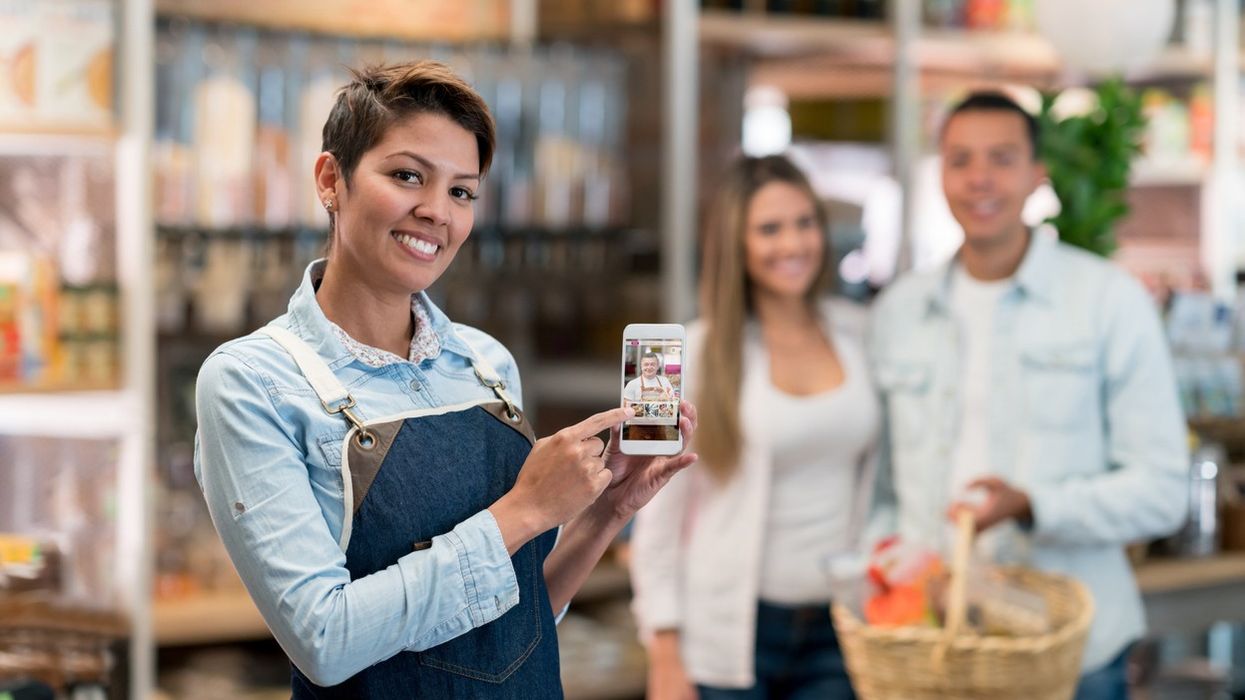New programme will help business owners with digital tools
RESTRICTIONS around the pandemic last year hit many businesses and Nirali Buch Mankodi was no exception. This co-founder of Superfoodio, which uses natural and plant-based ingredients for their chocolate and peanut butter products, had to look for alternative ways to reach their customers.
As brick and mortar shops which stocked their delicious treats were closed, Nirali decided to turn her attention to their online operations.
“Since Covid-19 hit the UK, we were severely impacted, with a decline of up to 80 per cent in sales revenue due to our central London stockists being shut and people not travelling into London for work,” she said.
“We had to assess how our business would survive and we turned our focus to online and started working on building our online platforms and digital channels to reach customers directly.
“We also used the time to rebrand to more attractive packaging and accelerate areas of the business such as new product development.”
Adversity can provide opportunities for enterprising businesses and Nirali’s story illustrates how being quick to adapt can help a company stay afloat.

According to Nirali, “As a business, being able to operate remotely during the last 18 months has been essential for us. The technology we rely on the most is high speed and reliable internet. This allows us to stay connected with our customers, our team and everyone in our supply chain. Our main method of communication has been using video conferencing.”
Nirali’s Superfoodio is the sort of enterprise that Mastercard’s Strive UK programme seeks to support; aimed at Britain’s micro and small enterprises, it supports their digital ambitions as we come out of the pandemic.
Launched in September, Strive UK will support 650,000 small businesses over the next three years by providing guidance free of charge, offering helpful tools as well as one-to-one mentoring. It is partnering with Enterprise Nation, Digital Boost and Be the Business to help realise this goal.
A particular focus for Strive UK’s programme is businesses run by females and those from a minority ethnic background.
Mastercard president for UK and Ireland, Kelly Devine, said, “Small businesses are the beating heart of the British economy.
“The past 18 months have proved almost unendurably tough for many. Strive UK has been set up to act as a free resource for small business owners across the country, helping them to navigate the digital economy, build relationships and communities, and ultimately realise their growth ambitions.”
A survey by the Centre for Economics and Business Research (Cebr) showed that the UK’s small and micro businesses could potentially miss out on an estimated £827 billion growth opportunity over the next five years if they are not supported to digitise.
It found that 41 per cent of small business owners said their company would not have survived without digital tools.
Through Digital Boost, any small business can have unlimited one to one conversations with digital and business experts free of charge. Guidance is available on a wide range of topics, when the business needs it, no matter where they are on their journey.
Managing Director Karen Licurse said, “Micro and small businesses have told us that the support they value most is highly personalised and in the moment. They want specific, tangible things they can do differently right now, not just generic advice. That's why we created Digital Boost.”
Nirali said, “Technology has advanced so much that there’s always something new to learn and tools to utilise, which make life running a business easier. As a start-up, we have a growth mindset and therefore are easily able to adapt to new solutions that become part of our business and we can’t live without.”
Strive UK will support small businesses in a number of ways, including an online ‘One Stop Shop’ for entrepreneurs with advice on all areas of growing their business, one-to-one mentoring for businesses to identify the right digital tools for them, and a forum to speak to similar businesses who have already successfully managed to integrate new tools.
Founder of Enterprise Nation, Emma Jones CBE, explained how Strive UK can help small businesses.
“Millions of people are currently starting or growing a business in the UK, and they know that access to support will help their business ambitions. But founders can be put off from getting help due to the volume of support programmes in the market and not knowing the part of the business that needs help.
“The solution we are building as part of Strive UK will address this by taking the business owner through a basic diagnostic and then connecting them, in one simple journey, to all the support programmes and resource on offer. In short, it will make the business support market much more efficient.”
In Nirali’s experience, “It can be difficult to find the right source of finance, especially as a start-up. Finance and cash flow to support growth for the business is a balancing act. You also want it to fit your needs and requirements as there is no one size fits all.”
She adds, “Accessing finance also requires a lot of input which can also take your focus away from working on and building your business.”
According to Be the Business CEO Anthony Impey MBE, “Strive UK will help unlock the tremendous potential and entrepreneurial drive of ethnic minority owned businesses, and that will be transformational - both for the businesses and for their communities.”
Mastercard also recently published a whitepaper with recommendations for the UK government to break down the barriers that micro and small businesses face. It identified four key areas of opportunity - empowering businesses to take advantage of digital technology, simplifying the support ecosystem, encouraging peer-to-peer mentoring and networking and targeting resources at underserved segments of the small business community.
Nirali, whose four-year-old business has a five-strong team, said, “We are going through a rapid growth period and are eager to reach our full potential. This requires working with the right partners and also working capital to support large orders in our industry.”
Research conducted by Cebr on behalf of Mastercard found that –
- 41 per cent of small business owners said their company would not have survived the pandemic without digital tools.
- 47 per cent of small business owners believe technology will become more important their success over the next five years.
- 45 per cent of small business owners report that the use of technology has already helped them to expand their customer base.
- 39 per cent of small businesses felt “overwhelmed” by the amount of choice
- 32 per cent wanted to use more digital tools, but were unsure which ones would be best for their business. This uncertainty rises to 49 per cent in the case of businesses that are owned or run by individuals from ethnic minority backgrounds
- 50 per cent of small businesses identify the introduction of new technologies into their businesses as a priority over the next 12 months.
- 70 per cent of small businesses believe technology can help to improve business performance.
- One in three small businesses don’t know how and where to access digital and IT skills essential to growth.
- Around one-third of small business owners say technological adoption has led to increased turnover and increased profit.














